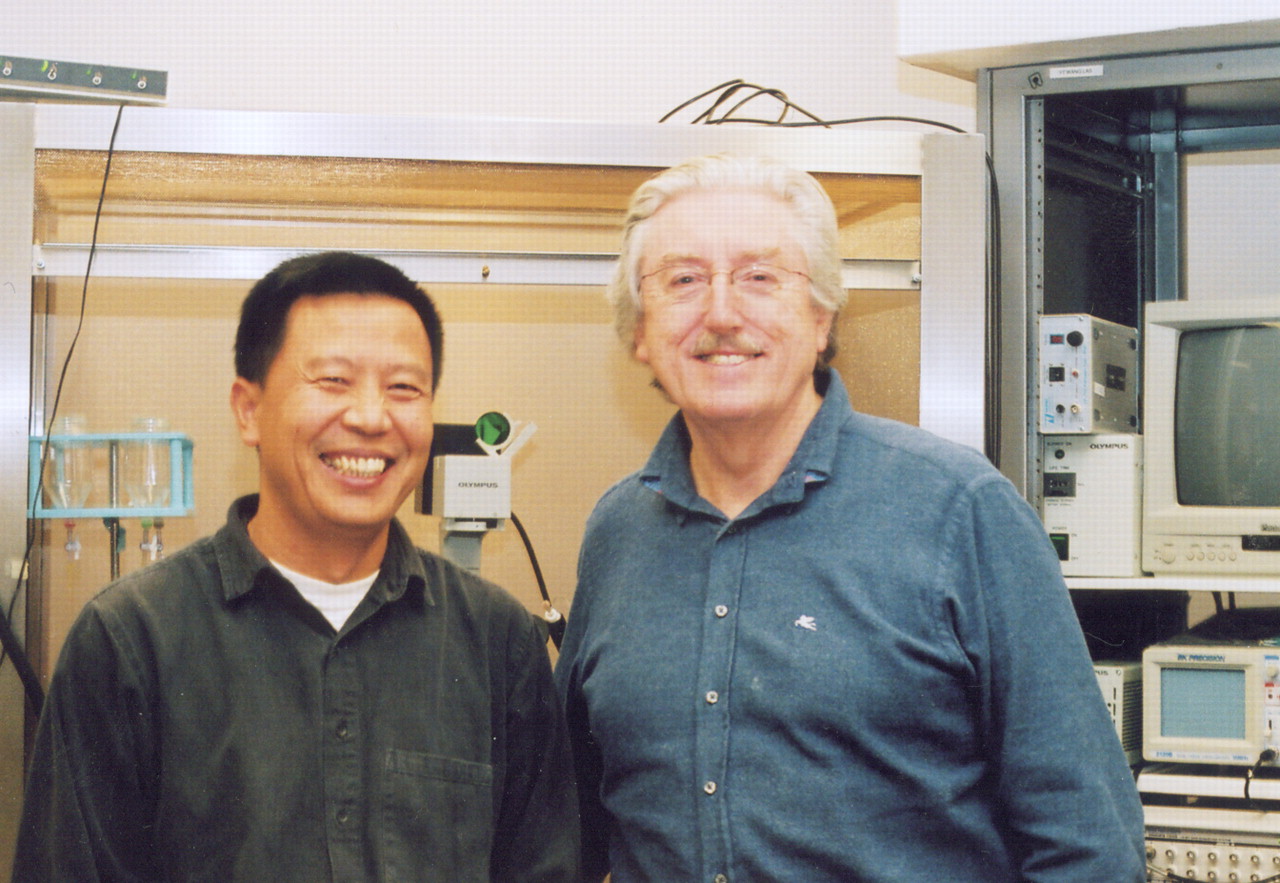It's a typical November day in Vancouver, British Columbia—rain drumming on roofs, wind thrashing the tips of firs—as pedestrians rush toward the University of British Columbia Hospital.
The hospital entrance, however, is well lit and friendly. An intriguing sign reads “Brain Research Centre.”
Some research taking place in the center, in fact, is not just novel—it might possibly revolutionize the design of psychotropic drugs.
The research is headed by Anthony Phillips, Ph.D., director of the University of British Columbia Institute of Mental Health, and by Yu Tian Wang, M.D., Ph.D., a senior investigator at the Brain Research Centre.
“The concept that we are working on,” Phillips explained with a hint of a British accent, “could lead to a new generation of psychotropic drugs that would target much more selectively the regulation of nerve receptors in the brain than current psychotropic drugs do.”
In essence, one of these so-called “interference peptide drugs” would not block a receptor or activate a receptor, as current psychotropic medications do, but rather would influence the movement of receptors in and out of the membrane of nerve cells.
It all started with nerve cell plasticity, where a nerve changes its firing in response to a stimulus it has received—say, through learning, through the environment, or through substance abuse. To accomplish this change in firing, neurons appear to alter the number of two types of glutamate receptors on their synaptic membranes. These are the NMDA and AMPA receptors. The way the neurons change the number of the receptors is either by adding them to the membrane or by removing them from it.
“I think this is an incredibly important breakthrough. It is a new concept in drug development that could have a real impact.”
During the past five years or so, Wang discovered the identity of phosphorylation sites on the AMPA receptor that are critical for its removal from the nerve cell membrane. With that knowledge, he then designed a small sequence of amino acids—a peptide—that would prevent phosphorylation of a critical part of the AMPA receptor and in turn keep the receptor from being removed from the nerve cell membrane.
“So what we have done,” Phillips explained, “is that we have prevented, with this very tiny peptide, the working of machinery that is responsible for the movement of the AMPA receptor, which is one form of synaptic plasticity. In other words, we have taken a good part of the nerve cell's capacity to adapt to certain forms of experience out of commission.”
The next challenge facing Phillips, Wang, and their colleagues was figuring out how to transport the tiny peptide from the bloodstream into the brain. Here they capitalized on other scientists' discovery that there is a benign part of the virus that causes AIDS that is able to cross the blood-brain barrier. They thus coupled their little peptide to this viral sequence so that the sequence could carry the peptide from the bloodstream into the brain.
“So now we have the peptide—the pay-load—inside the nerve cell,” Phillips explained. “There are millions of nerve cells in the brain that contain these AMPA receptors. The beauty of this approach is that our little `interference peptide drug' does not block all the AMPA receptors in the brain; it only blocks a small portion that have been changed through experience—say, through learning, through the environment, or through substance abuse. So this provides unique specificity, which is very hard to come by through conventional pharmacology. And when you have this amount of specificity, you have far less chance of side effects.”
But then another question arose: Does the peptide also change behavior? Here, the researchers tested the peptide on experimental animals that had been repeatedly exposed to amphetamines. They found that the peptide subdued the animals' excited reactions to the amphetamines.
Thus, not only can the peptide get into the brain and block the removal of AMPA receptors from nerve cells that have been changed through experience, but it also seems to be able to alter behavior as a result. But how might it benefit people with mental illness? Repeated exposure to amphetamines can cause not just addiction, but psychosis, Phillips explained. So the drug might be able to combat aspects of either drug addiction or psychosis, he believes.
“It is very encouraging,” he said, “because in preclinical experiments we have completely and selectively blocked enhanced stereotype behaviors that result from repeated exposure to amphetamines.”
The drug might also be able to counter other kinds of psychosis than that provoked by amphetamines, Phillips noted. “There are many theories about glutamate being a critical receptor in schizophrenia—in the expression of psychosis and a target for its control.”
Phillips, Wang, and their team will conduct toxicology tests with the peptide over the next year, and if the peptide is not harmful to animals, they will then attempt to obtain permission from the U.S. Food and Drug Administration and its Canadian counterpart to test the peptide in humans.
If such clinical trials get a green light, the researchers hope that a pharmaceutical company will be willing to conduct them, Phillips said.
Meanwhile, said Phillips, “I think this is an incredibly important breakthrough. It is a new concept in drug development that could have a real impact. We have to get other researchers excited about it.”
The latest study from Phillips, Wang, and their colleagues,“ Nucleus Accumbens Long-Term Depression and the Expression of Behavioral Sensitization,” was published in the November 25, 2005 Science. An abstract is posted at<www.sciencemag.org/cgi/content/abstract/310/5752/1340>.▪
Science 2005 310 1340


